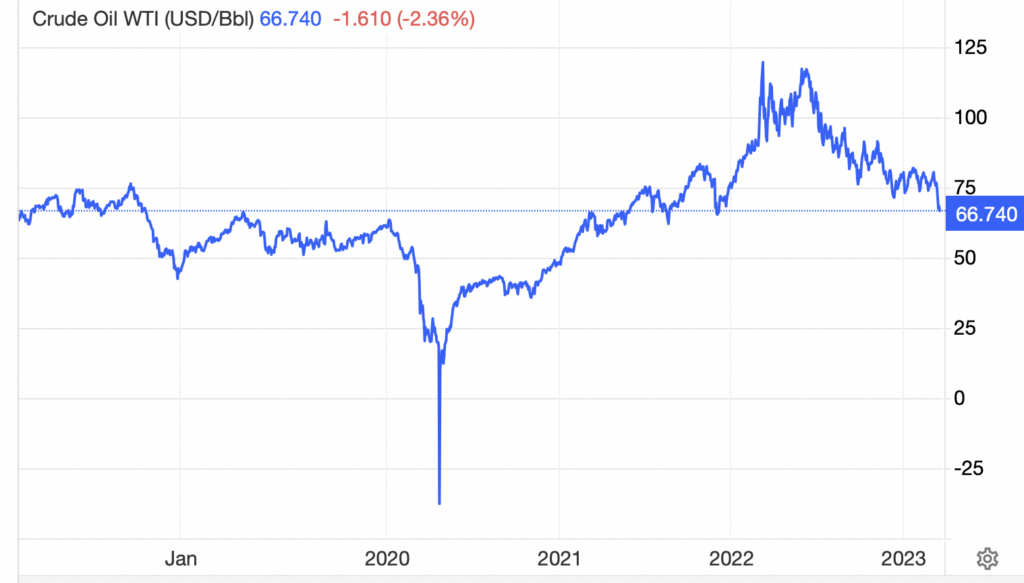Oil prices continue to trade like a falling knife. Prices fell more than 10% in the week ended March 17, marking the commodity’s worst week of 2023. The benchmark West Texas Intermediate (WTI) closed at US$66.74 on March 17, its lowest level since December 2021.
Remarkably, even further price weakness seems possible. In the fairly sluggish global economy, worldwide producers are simply bringing more oil out of the earth than there is demand. Global demand is currently running at about 100 million barrels per day (bpd), about 1.5 million bpd less than the average production of 101.5 million bpd.

That gap between the amount supplied and end demand boosts the amounts in storage each day. Global oil inventories rose by 52.9 million barrels in January 2023, per the International Energy Agency (IEA), pushing total global inventories to 2.851 billion barrels, the highest in 18 months.
Aside from direct supply-demand issues, most major commodities, including oil and copper, are being buffeted by fears about the instability of the banking system in the U.S. and worldwide. As such, the short-run trading patterns of these commodities mirror — perhaps accentuate is a more accurate description — investors’ degree of optimism of when confidence and stability in the financial system will return. Very little optimism prevailed in the past week despite assurances of the soundness of the system from President Biden and Treasury Secretary Yellen.
Two main variables could reverse oil’s price slide but neither seems likely to impact the oil pricing environment in the short term. First, China’s reopening will create substantial incremental demand as 2023 progresses, but that additional draw is only starting to be felt. Analysts generally expect that when China’s incremental demand is fully in place, global supply and demand may become approximately balanced.
A hopeful piece of anecdotal evidence supporting this notion has been the doubling over the last month (to around US$100,000 per day) in the oil transport rates of Very Large Crude Carriers (VLCCs). This reflects China’s oil refining industry’s growing desire to import U.S. oil.
Second, the Organization of Petroleum Exporting Countries (OPEC) is scheduled to meet in the next few weeks, but rumors of any production cuts remain fairly quiet. OPEC members reduced production in October 2022, and as part of that agreement, the members pledged those production levels would be maintained through the end of 2023. However, some media reports suggest Saudi Arabia and Russia may be discussing “efforts to promote market balance and stability.”
Information for this briefing was found via Trading Economics and the sources mentioned. The author has no securities or affiliations related to this organization. Not a recommendation to buy or sell. Always do additional research and consult a professional before purchasing a security. The author holds no licenses.









